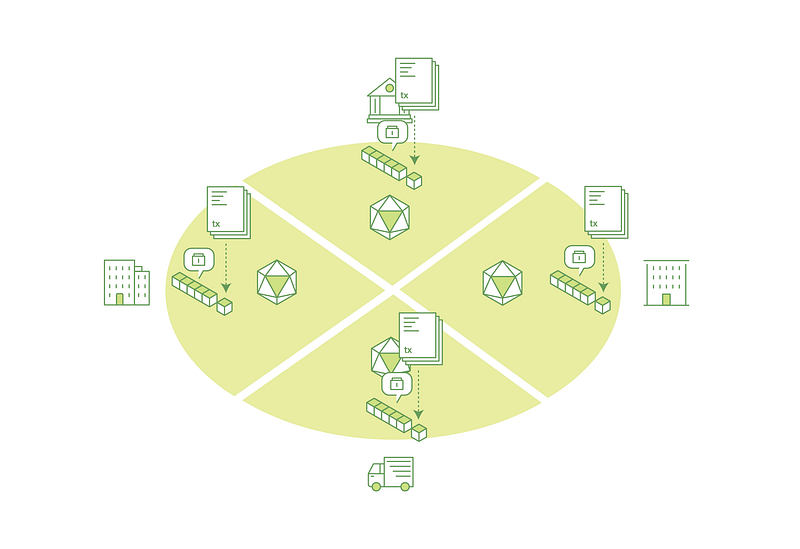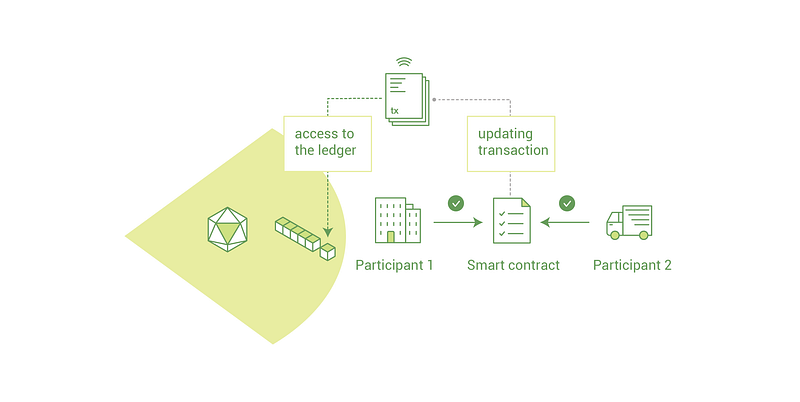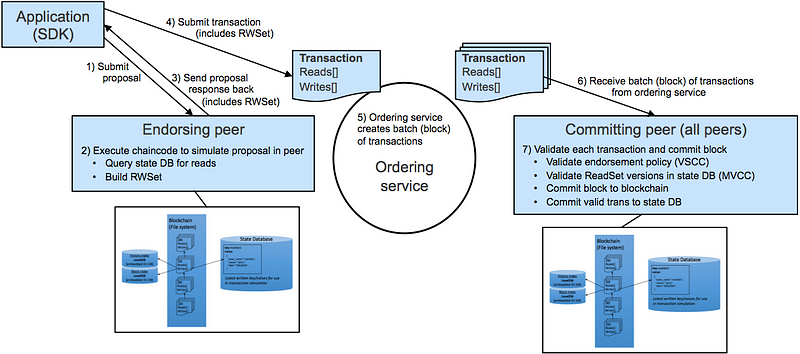Hyperledger Development with in 10 days — Day 2
In previous article we saw about the Hyperledger blockchain system. And we started with Hyperledger Fabric platform.
Key concepts of Hyperledger Fabric
As we discussed hyperledger fabric is a platform for distributed ledger solutions underpinned by modular architecture, delivering high quality of confidentiality, resiliency, flexibility and scalability. It is designed to support pluggable solutions.
“Elastic and extensible architecture for blockchain systems”
A Distributed Ledger
The heart of the blockchain is a Distributed ledger. That records the transactions took place in the network.
We see the distribution and collaboration are powerful attributes that mirror the way the businesses exchange the goods and services in the real world.
In addition to decentralisation, collaboration the information is appended to end of the blockchain. Since the data is immutable in chain, it makes the provenance simple. It is also called the “system of proof”.
Smart Contracts
To support consistent update of information on the blockchain, to enable a whole list of ledger functions like transactions, queries in the network.
Smart contracts makes the data available to the participants in the network.
“A smart contract can stipulate the cost of shipping an item that changes based on the time it receives”
Consensus
Process of keeping the ledger transactions synchronised across the network. The update to the blockchain information happens because of the approved participants. Ledgers do update the same transactions in same order is called consensus.
Six technical advantages of the of Hyperledger Fabric
- Permissioned membership
In other blockchain systems, anyone who has the internet can connect to the network and view all the blockchain data and transactions. In businesses it will be a problem because data privacy and isolation are an issue.
“Using fabric we can create the permissioned networks where all parties are known identities”
In business context, we need to make sure with whom we are transferring data, allowing to access our data. It can be easily handled in the fabric framework.
2. Performance, Scalability, Level of Trust
The Fabric is built on modular architecture. So transaction process happens in three steps.
- Distributed logic processing & agreement (chaincode)
- Transaction ordering
- Transaction validation and commitment
It has several advantages. Because of this network performance and scalability are optimised.
Transaction Life cycle of Ledger
Only signatures of the transaction and read/write sets are sent around the network. Only Endorsers and committers truly see the transaction. So fewer level of trust bring more security to the system.
3. Data on need to know basis
In businesses, when connecting with other businesses everyone needs privacy and data isolation. Everyone could not see others transactions. Data can be shared privately between businesses through channels.
Every connecting parties will have their channel. Data will flow through it. Each channel will have it is own ledger, only included members can do read, write in the channels.
4. Richer Queries over Ledger
Ledger is a sequenced record of state transaction of the application. Each transaction results is a set of key value pair to create, update and delete ledger data. Immutable source of truth is added in latest hyperledger. It uses the LevelDB and CouchDB can also be used in the hyperledger fabric system for better querying.
5. Architecture to support pluggable components
Allow networks to plug with existing systems like “Bring your own identity”. We can use the companies identity system to build the blockchain applications. Also other modules like consensus, encryption algorithm used.
6. Protection for sensitive data
It has HSM (Hardware support module), which is vital for safeguarding the sensitive data, digital asset keys.
Please find the other days of Hyperledger fabric





Thanks for sharing this informational post about hyperledger development.
ReplyDelete